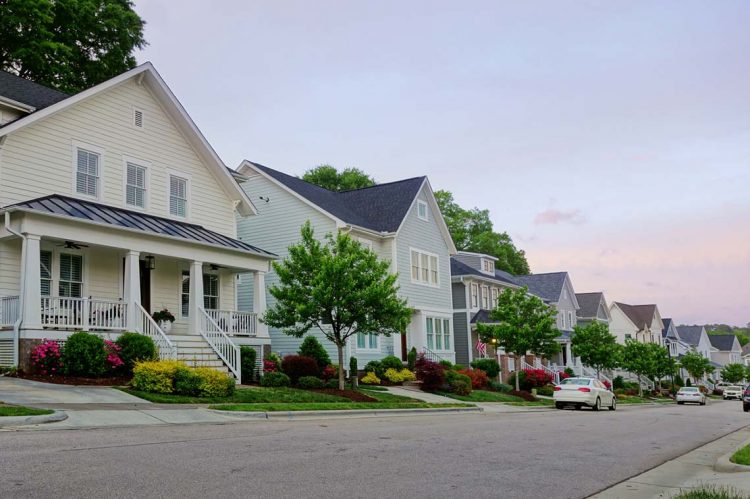Median single-family home and condo prices rose from the third quarter of 2021 to the fourth quarter of 2021 in 56% of Opportunity Zones around the country and spiked by at least 20% annually in almost half, according to a new report from ATTOM. Its fourth-quarter 2021 special report analyzing qualified low-income Opportunity Zones targeted by Congress for economic redevelopment in the Tax Cuts and Jobs Act of 2017, looked at 5,180 zones nationwide with sufficient data to analyze, meaning they had at least five home sales in the fourth quarter of 2021.
Key findings from the report:
- Median prices of single-family houses and condominiums rose from the third quarter of 2021 to the fourth quarter of 2021 in 2,688 (56%) of Opportunity Zones with sufficient data to analyze, and increased from the fourth quarter of 2020 to same period last year in 3,360 (77%) of those zones. By comparison, median prices rose quarterly in 55% of census tracts outside of Opportunity Zones and annually in 81%. (Of the 5,180 Opportunity Zones included in the report, 4,843 had enough data to generate usable median-price comparisons from the third to the fourth quarter of 2021; 4,379 had enough data to make comparisons between the fourth quarter of 2020 and the fourth quarter of 2021).
- Measured year over year, median home prices rose at least 20% in the fourth quarter of 2021 in 1,997 (46%) of Opportunity Zones with sufficient data. Prices rose that much during that period in 41% of other census tracts throughout the country.
- Opportunity Zones again did even better when comparing areas where prices rose at least 25% from the fourth quarter of 2020 to the fourth quarter of 2021. Measured year over year, median home prices rose that much in 1,655 (38%) of Opportunity Zones but in only 31% of census tracts elsewhere in the country.
- Typical single-family home values in 51% of all Opportunity Zones increased annually in the fourth quarter of 2021 by more than the jump in the overall national median home price. Nationally, the figure rose 16.1%, year over year. Measured quarterly, prices in Opportunity Zones increased at a slower rate than earlier in 2021. But 52% of zones still saw larger quarterly improvements than the national uptick of 1.4%.
- Among states that had at least 25 Opportunity Zones with enough data to analyze during the fourth quarter of 2021, those with the largest portion of zones where median price rose year over year were in the West. They were led by Idaho (median prices up, year over year, in 96%of zones), Nevada (95%), Utah (92%), Oregon (91%) and Washington (91%).
- Of all 5,180 zones in the report, 1,803 (35%) still had median prices in the fourth quarter of 2021 that were less than $150,000 and 856 (17%) had medians ranging from $150,000 to $199,999.
- Median values in the fourth quarter of 2021 ranged from $200,000 to $299,999 in 1,176 Opportunity Zones (23%) while they topped the national median of $315,648 in 1,219 (24%).
- The Midwest continued in the fourth quarter of 2021 to have the highest portion of Opportunity Zone tracts with a median home price of less than $150,000 (61%), followed by the South (40%), the Northeast (36%) and the West (4%).
- Median household incomes in 87% of the Opportunity Zones analyzed were less than the medians in the counties where they were located. Median incomes were less than three-quarters of county-level figures in 55% of zones and less than half in 16%.
The takeaway:
“Neighborhoods in and around some of the poorest areas of the United States kept riding the national housing market boom in the fourth quarter of last year, much as they did throughout 2021, said Todd Teta, chief product officer with ATTOM. “The pace of price increases slowed, which is common in the last few months of any year. But gains in Opportunity Zones again pretty much matched what was going on elsewhere and even beat out the rest of the market in some ways. While Opportunity Zone markets remained depressed, the increases probably reflected the trickle-down effect of buyers priced out of more expensive neighborhoods. The gains also represented an ongoing sign of vitality in lower-income areas—something that ups the ante for investors looking to take advantage of Opportunity Zone tax breaks.”












